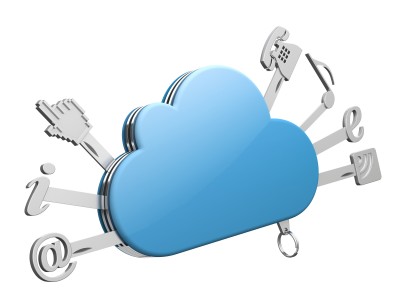by Mike Monell, Director Of Technology
The official definition from the National Institute of Standards and Technology reads: ”Cloud computing is a model for enabling convenient, on-demand network access to a shared pool of configurable computing resources (e.g., networks, servers, storage, applications and services) that can be rapidly provisioned and released with minimal management effort or service provider interaction.”
What does this really mean? Having the ability to access the Internet anywhere, anytime and being able to use any or all of the data and applications that you want.
While there have been many definitions thrown out to consumers in the recent months that have lead up to the recent cloud phenomenon, the common denominator is – Having your data and/or software stored somewhere besides your PC or Mac and being able to access it through the Internet from almost any internet capable device.
When the technical jargon is stripped away, cloud computing can be grasped on its basic level— anytime, anywhere computing—without the user ever having to know much about the technology.
How Does it Work?
In simplest terms, cloud computing involves delivering hosted services over the Internet. The service end is where the data or software is stored and the user end is a single person or company network.
Now imagine that the cloud consists of layers — mostly the service end layers and the user end layers. The user end layers are the ones you see and interact with. When you access your web-based email service like Gmail, Yahoo or Hotmail for example, you are using software running on the service end of a cloud. The same is true when you access your Facebook or Salesforce.com account. The user end consists of the hardware and the software architecture that fuels the interface you see on the front end.
In a cloud computing system, there’s a significant workload shift. Local computers (the user end) no longer have to do all the heavy lifting when it comes to running applications. The network of computers that make up the cloud handles them instead. Hardware and software demands on the user’s side decrease. The only thing the user’s computer needs to be able to run is the cloud computing system’s interface software, which can be as simple as a Web browser, and the cloud’s network takes care of the rest.
Who Uses Cloud Computing?
You are probably using it right now.
The transition from being very ‘personal hardware dependent’ to a world where resources are shared among the masses is creeping up on us slowly and unobtrusively. Many people have already transitioned to using a cloud environment for most of their time in front of the computer without even realizing it.
If you use email, or go to a social network and post photos, access online document software, or use your company’s hardware/software, you’re probably using the cloud. You may also use it to store online tax or financial records. You can also use cloud computing to back up files for storage off your PC or Mac.
Businesses such as hotels use it for consumers to make reservations and a major electronics retailer is using it to fill their online orders. Sending a picture to a Facebook friend today? You are headed for the clouds.
It’s critical to choose wisely when picking a service to use with your important personal or business data, but the flexibility cloud computing provides is well worth it.
Why not let eXemplify Group assess your environment and needs to see where you might take advantage of the cloud. The wave of the future is in the clouds.
See you up there.
